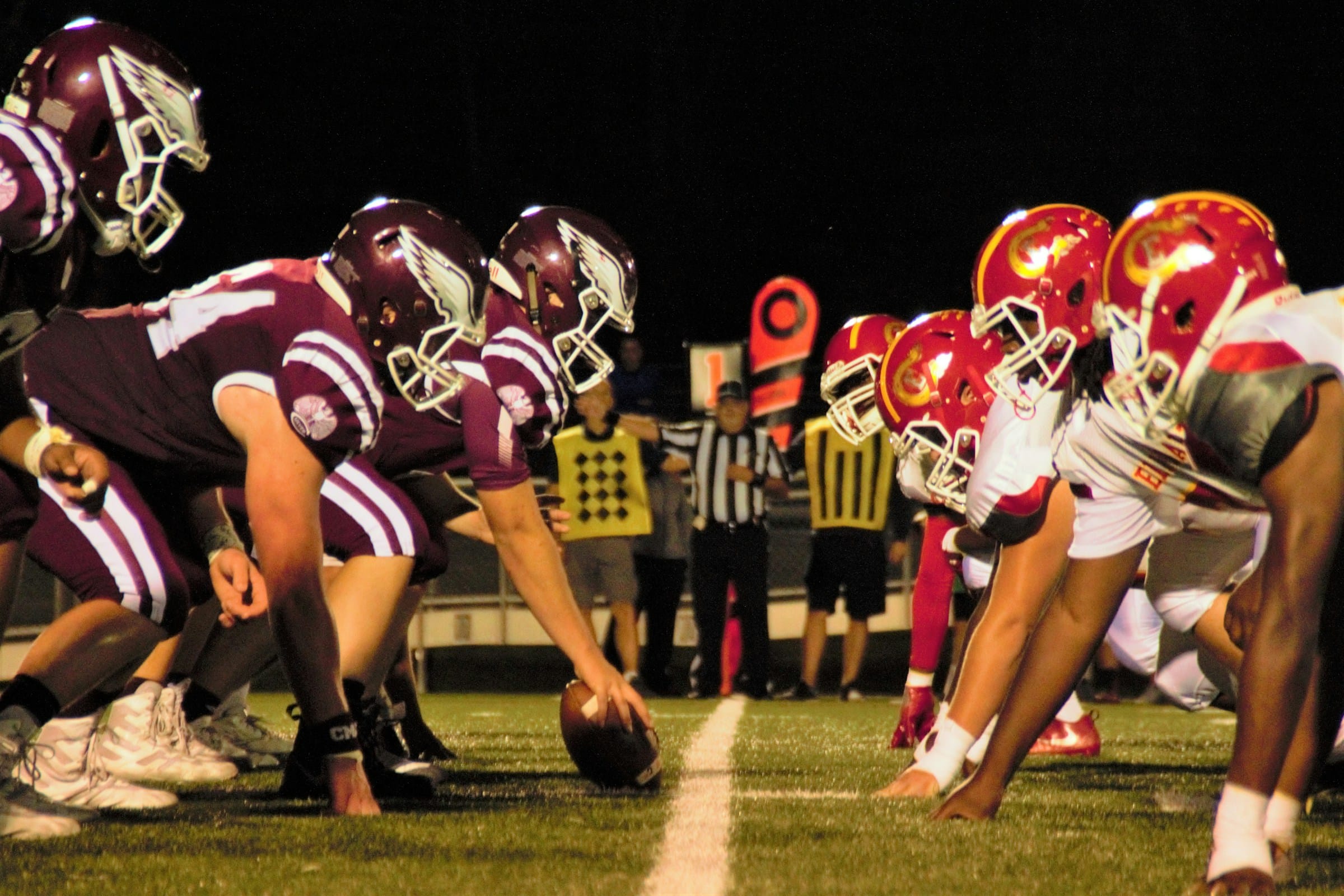Can Virtual Reality Simulation Improve Decision Making in American Football Quarterbacks?

American football is a sport that has seen a significant evolution in its training techniques over the years. With advancements in technology, the realm of virtual reality (VR) has been increasingly explored for its potential to offer superior training experiences. In particular, the role of quarterbacks, who are essentially the "control center" of the team, has been a focus of this emerging interest. This article aims to delve deep into the question: can virtual reality simulation contribute to improved decision making in American football quarterbacks?
Embracing Virtual Reality in Sports Training
The application of virtual reality is already being noticed across various sporting domains, and football is no exception. In the world of football, VR is being seen as a transformative tool that can provide a real-world gaming experience to players, simulating actual game scenarios, and helping them hone their skills and strategies.
A lire en complément : What Are the Innovative Approaches to Stroke Rehabilitation for Paralympic Swimmers?
For a quarterback, one of the most crucial roles in a football team, decision-making is a pivotal aspect. The split-second decisions they make during the game can significantly alter the course and outcome. Therefore, effective training is vital in developing their decision-making prowess, and this is where virtual reality comes into play.
Virtual reality uses a combination of high-end graphics, motion sensors, and interactive software to create a virtual gaming environment. With a VR headset on, players can experience a game scenario as if it were real. This can include everything from the roar of the crowd to the pressure from opponents. In such an immersive environment, players can practice their strategies and improve their decision-making skills in a risk-free setting.
Avez-vous vu cela : What’s the Effect of Different Breathing Techniques on Recovery in High-Intensity Functional Training?
Virtual Reality and the Quarterback Experience
A quarterback’s role on the field goes beyond just throwing the ball. They have to read the defense, call plays, and make quick decisions under immense pressure. All these tasks require a high level of cognitive load, making the quarterback position one of the most mentally demanding in all of sports.
Virtual reality can assist in training quarterbacks by providing an immersive, game-like environment where they can practice without physical risk. For example, a quarterback can face a virtual defense, call plays, and make decisions in the VR environment. This practice helps them build experience and improve their performance on the actual field.
Data plays a crucial role in VR training. By capturing and analyzing data from the player’s VR practice sessions, trainers can assess performance, identify areas of improvement, and provide tailored feedback. In this way, virtual reality can significantly accelerate a quarterback’s learning curve.
The Impact of Virtual Reality on Player Performance
With the use of VR, players have the opportunity to practice in a controlled, yet highly real environment. The virtual experience closely mimics the pressures and demands of a real game, thus providing the quarterbacks with the critical ‘mental reps’ they need to build their performance.
One key advantage of using the VR system is the ability to replay scenarios. After a session, players can review their performance, identify their flaws and work on them. For example, if a quarterback repeatedly misreads a particular defensive formation in the VR training, they can keep replaying that scenario until they get it right. This direct feedback loop enhances learning and helps the quarterback improve more quickly and effectively.
Also, the high level of realism in VR training pushes players to think on their feet and make real-time decisions, just like in a live game. This helps in improving their decision-making skills, which is paramount for quarterbacks.
The Future of Virtual Reality in Football Training
The potential of virtual reality in training football players, especially quarterbacks, is immense. The technology is still relatively in its infancy, but as advancements are made, the application and benefits will only grow.
The future will likely see a greater emphasis on data analytics in VR training. With the ability to capture and analyze data from VR sessions, trainers can provide more precise feedback and training, thereby making the VR training even more effective.
In conclusion, virtual reality holds great promise for the future of football training. Its potential to provide an immersive, realistic training environment can help quarterbacks improve their decision-making skills. Although still an emerging technology in the field of sports training, it’s clear that VR is set to play a significant role in the future of football.
Virtual Reality: A Game Changer in Sports Training
Virtual reality is poised to revolutionize the way athletes train and prepare for competitions, and quarterbacks are at the forefront of this revolution. The immersive, realistic experience provided by VR can dramatically enhance their decision-making skills, ultimately leading to improved performance on the field. With continued advancements, the role of VR in sports training is only set to increase, making it a game-changer in the world of sports.
Despite the significant progress made in VR technology, it’s worth noting that it’s just one piece of the sports training puzzle. While it provides a valuable tool for practicing decision-making under game-like conditions, it’s not a substitute for physical training and practice. Therefore, as we continue to explore the benefits and potentials of VR in sports, it’s essential to balance it with conventional training methods.
In the end, it’s the combination of advanced technology like VR with traditional training that will elevate the performance of our athletes to new heights. As the boundaries of technology and sports converge, the future of sports training indeed looks exciting.
Enhancing Injury Prevention and Rehabilitation through Virtual Reality
One of the significant benefits of using virtual reality for football training is the potential for injury prevention. Physical injuries are a common occurrence in American football, and often, they can be career-ending. VR technology can contribute considerably to reducing the risk of such injuries.
The virtual environment created by VR allows players to practice their movement patterns, respond to game situations, and make split-second decisions without the physical risk usually associated with real-time practice. In this virtual setting, players can even practice dangerous or high-impact plays, without the fear of injury. Furthermore, VR can help in rehabilitating players who are recovering from injuries. It allows them to continue practicing their skills and strategies and maintain their decision-making sharpness, without further damaging their physical health.
In essence, VR contributes to both injury prevention and rehabilitation in football training. Players can practice more safely and effectively, reducing the risk of injury, and those recovering from injuries can continue their practice without the physical strain.
Integrating Data-Driven Approaches in Virtual Reality Training
Virtual reality training is not just about creating a realistic game-like environment. It also offers the potential for a data-driven approach to football training. By using technology like EON Sports, for example, coaches can gather and analyze data from a player’s VR sessions. This data can provide crucial insights into the player’s performance, decision-making, and areas of improvement.
Data from VR training can show how players respond to different game situations, how quickly they make decisions, and how effective those decisions are. It can provide a detailed understanding of a player’s strengths and weaknesses, enabling coaches to provide personalized feedback and tailored training.
The use of data-driven approaches in VR training can significantly enhance the effectiveness of the training. It can help in monitoring progress, identifying areas of improvement, and designing more efficient training programs. It allows for a level of precision and personalization in football training that was previously unthinkable.
Concluding Thoughts: The Future of Virtual Reality in Sports Training
There is no denying the transformative potential of virtual reality in sports training. Its ability to provide an immersive, risk-free, and data-driven training environment makes it an attractive tool for improving decision-making in football quarterbacks. From enhancing performance on the field to facilitating injury prevention and rehabilitation, the benefits of VR are considerable.
However, it’s crucial to remember that VR is a complement to, not a replacement for, traditional training methods. Real-time, physical practice is still essential in sports training. VR can enhance this practice by providing opportunities for safe practice, personalized feedback, and improved decision-making.
Looking ahead, we can expect to see further advancements in VR, such as the integration of augmented reality (AR). AR can add another layer of realism to the virtual environment, creating even more engaging and effective training experiences.
As we move forward into this exciting future, it’s essential to continue exploring and pushing the boundaries of this technology. The future of sports training is undoubtedly bright, with virtual reality leading the way.
